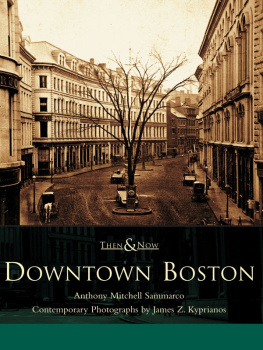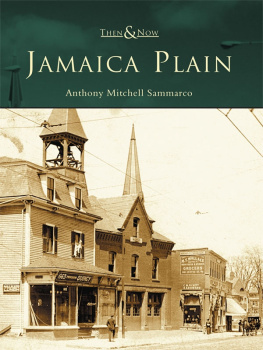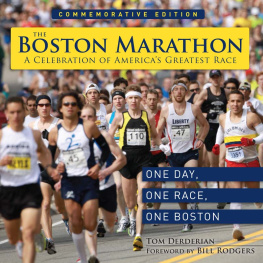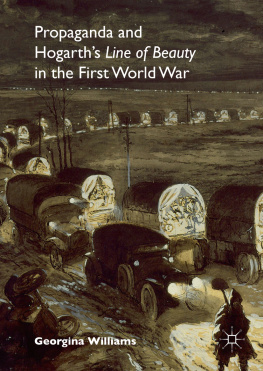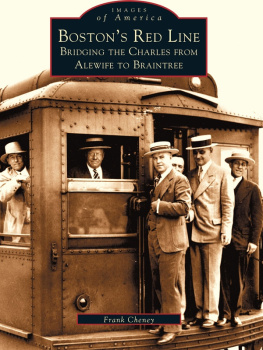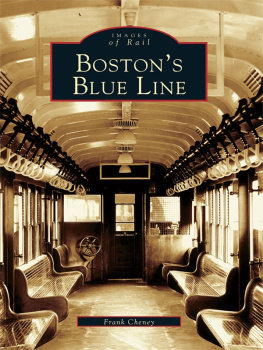Elder Andrew - Bostons Orange Line
Here you can read online Elder Andrew - Bostons Orange Line full text of the book (entire story) in english for free. Download pdf and epub, get meaning, cover and reviews about this ebook. City: Boston (Mass.);Massachusetts;Boston, year: 2013;2014, publisher: Arcadia Publishing, genre: Non-fiction. Description of the work, (preface) as well as reviews are available. Best literature library LitArk.com created for fans of good reading and offers a wide selection of genres:
Romance novel
Science fiction
Adventure
Detective
Science
History
Home and family
Prose
Art
Politics
Computer
Non-fiction
Religion
Business
Children
Humor
Choose a favorite category and find really read worthwhile books. Enjoy immersion in the world of imagination, feel the emotions of the characters or learn something new for yourself, make an fascinating discovery.

- Book:Bostons Orange Line
- Author:
- Publisher:Arcadia Publishing
- Genre:
- Year:2013;2014
- City:Boston (Mass.);Massachusetts;Boston
- Rating:4 / 5
- Favourites:Add to favourites
- Your mark:
- 80
- 1
- 2
- 3
- 4
- 5
Bostons Orange Line: summary, description and annotation
We offer to read an annotation, description, summary or preface (depends on what the author of the book "Bostons Orange Line" wrote himself). If you haven't found the necessary information about the book — write in the comments, we will try to find it.
Bostons Orange Line — read online for free the complete book (whole text) full work
Below is the text of the book, divided by pages. System saving the place of the last page read, allows you to conveniently read the book "Bostons Orange Line" online for free, without having to search again every time where you left off. Put a bookmark, and you can go to the page where you finished reading at any time.
Font size:
Interval:
Bookmark:
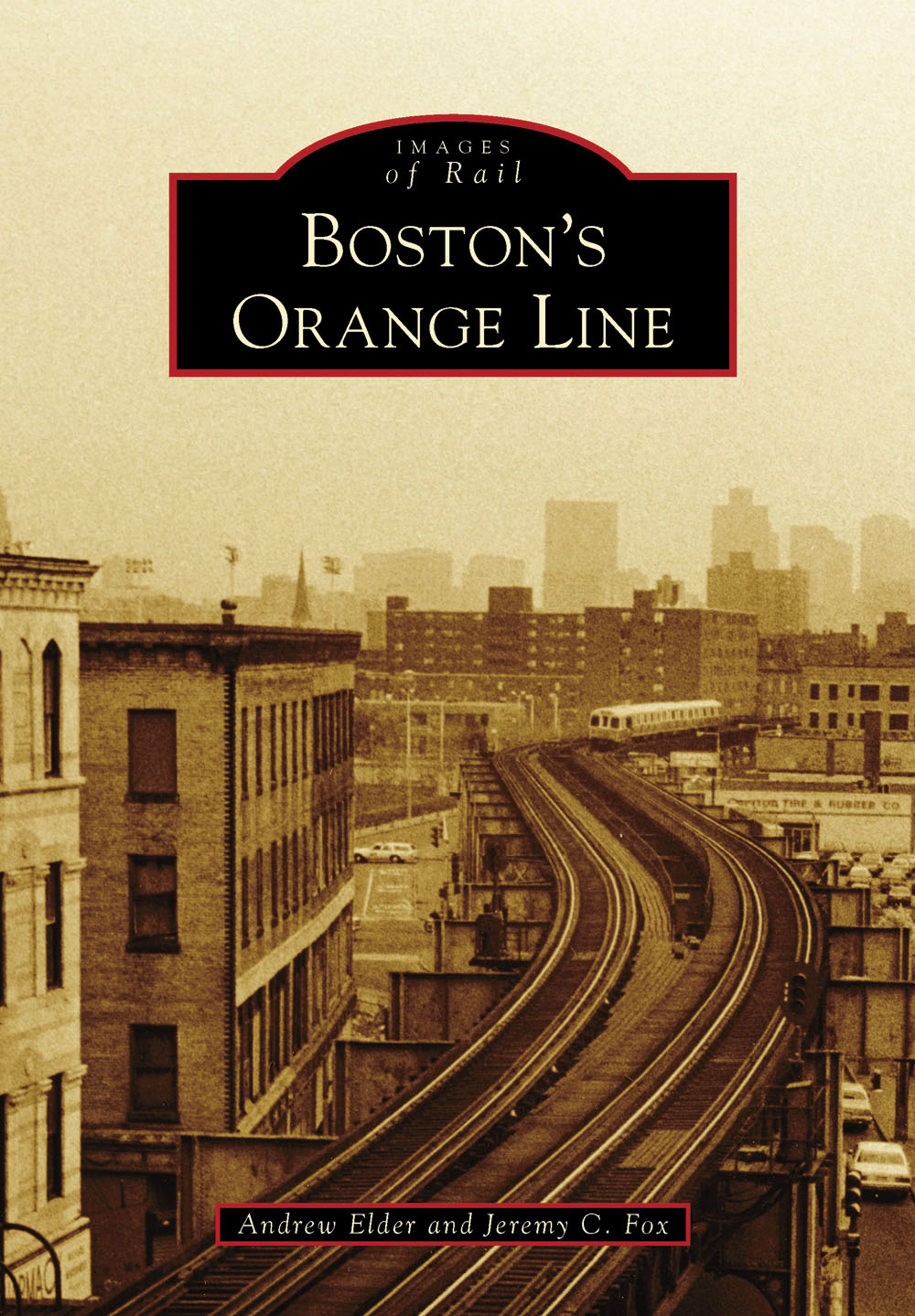
IMAGES
of Rail
BOSTONS
ORANGE LINE
ON THE COVER: A 1986 photograph shows an Orange Line train traveling down the old Elevated tracks on Washington Street in Roxbury, with the Hancock Center visible at far left and downtown Boston on the horizon. Elevated trains connected Everett to Roxbury and Jamaica Plain, passing through downtown and the South End, from the early 20th century until the Charlestown Elevated was demolished in 1975. This image is shown in full on . (Photograph by and courtesy of David Akiba.)
IMAGES
of Rail
BOSTONS
ORANGE LINE
Andrew Elder and Jeremy C. Fox

Copyright 2013 by Andrew Elder and Jeremy C. Fox
ISBN 978-1-4671-2047-0
Ebook ISBN 9781439644171
Published by Arcadia Publishing
Charleston, South Carolina
Library of Congress Control Number: 2013936165
For all general information, please contact Arcadia Publishing:
Telephone 843-853-2070
Fax 843-853-0044
E-mail
For customer service and orders:
Toll-Free 1-888-313-2665
Visit us on the Internet at www.arcadiapublishing.com
To Marsha Kamp Elder and Wanda Jean Fox
CONTENTS
ACKNOWLEDGMENTS
Like any work of its kind, this book is a collaboration between dozensif not hundredsof photographers, journalists, historians, and rail enthusiasts, many of whom are no longer with us and could not have foreseen their invaluable contributions to these pages. To all those who recorded the history of the Orange Line and its predecessor and complementary rail lines and their surroundings, we are deeply indebted.
For their patience, forbearance, and guidance, we thank our publisher, Rebekah Collinsworth, and editor, Caitrin Cunningham.
For their assistance in accessing high-quality historical images, we thank Marta Crill at the City of Boston Archives and Tom Blake and Aaron Schmidt at the Boston Public Library.
For their many contributions to this effort and their unflagging support, Andrew would like to thank Joanne Riley, Jessica Holden, Dale Freeman, Carolyn Goldstein, Daniel Ortiz, and all his colleagues in the Joseph P. Healey Library at UMass Boston and Libby Bouvier, Neal Kane, and all his friends at The History Project. He would especially like to thank his family: Harris J. Elder, Jacob and Betsey Elder, Lucas Wesley Elder, and Jean and Paul Garvey.
For their wisdom, support, and patience while he was preoccupied with the effort to complete this manuscript, Jeremy would like to thank Roy Greene, David Dahl, David Jrolf, Janet Walsh, Dean Inouye, Steve Smith, David Filipov, Anica Butler, and all the journalists at the Boston Globe who have taught him so much. He would also like to thank June Carolyn Erlick, Angelia Herrin, Jenifer McKim, and Charles Sennottall talented journalists who have generously shared their wisdom at the Harvard Extension School. And he would like to thank his family: Dale and Debbie Tully, Brandon Tully, and Kirsten Tully.
Very special thanks to Leo Sullivan and Frank Cheney, who patiently reviewed the manuscript.
For allowing us to use images from their personal collections and for answering questions we had along the way, we would like to thank the following people: David Akiba, Joe Boncek, Gene and Justyna Carlson, Frank Cheney, Tom Ericson, Ann Hershfang, Janet Hunkel, Wayne Jackson and FayFoto/Boston, Paul Locke, Andrew Lynch, Nathaniel Marsh, Steve Quinn, Anthony Mitchell Sammarco, Martha Stone, Otto M. Vondrak, and Andrew Zalewski.
INTRODUCTION
In 1987, as Boston prepared for the Washington Street Elevateds closing and the opening of a new Orange Line submerged along the Southwest Corridor, Martin F. Nolan, editor of the Boston Globes editorial page, summarized the Els impact on the Washington Street corridor:
The squeal begins on baritone, then escalates to soprano, a giant fingernail scratching a blackboard. The sound moves with a massive shadow 30 feet above the sidewalk that blots out all light, then rumbles into a thumping clickety-clack, its echo reverberating along steel girders down the track. This teeth-chattering ritual occurs every time an Orange Line train negotiates a curve around Dudley Street336 times a day, flooding the streets below with noise, darkness, and confusion. Silence, then light, will soon rule Washington Street from Forest Hills to Chinatown as the El ends its 86-year reign.
The Orange Line is now part of the Massachusetts Bay Transportation Authority (MBTA) and is one of five color-coded transit lines that provide an average of 1.3 million passenger trips each week. The rapid-transit line that would become todays Orange Line opened in 1901 and was then managed by the Boston Elevated Railway Company, a private enterprise established in 1894 with the support of the Massachusetts Legislature to oversee construction and management of this new electric rail service.
In 1897, the West End Railway Company, which managed Bostons electrified streetcar service, was absorbed by the Boston Elevated Railway, which would oversee the citys rail transit for the next 50 years. That same year, the first subway system in the United States opened in Boston, running beneath Tremont Street adjacent to Boston Common. Four years later, the first elevated trains began offering service from Charlestown to Roxbury.
The Main Line Elevated, the rail service that would, in 1966, become the Orange Line, opened in 1901 with its northern terminus at Sullivan Square, located at the northern edge of Bostons Charlestown neighborhood between its border with the city of Somerville and the Mystic River. From there, trains rode the Charlestown Elevated down the neighborhoods Main Street, crossed the Charlestown Bridge into downtown Boston, and entered the Tremont Street Subway, a tunnel it then shared with the streetcar line that would become the Green Line. Trains emerged from the tunnel at the Pleasant Street Incline, in the Bay Village neighborhood, and proceeded from there south down the Washington Street Elevated tracks, through the South End and Roxbury, to the southern terminus in Dudley Square.
Running a different route through downtown Bostonbut connected to the Charlestown and Washington Street legs of the Elevatedwas the Atlantic Avenue Elevated, which opened shortly after the Main Line. This route arced through Chinatown and the Leather District, past South Station, and along the downtown waterfront to a junction with the Charlestown Elevated at the foot of the Charlestown Bridge. The Charlestown Elevated gained an intermediate station at Thompson Square in 1902, and the Elevated saw major changes in 1908. On November 30 that year, the new Washington Street Tunnel opened, giving Main Line trains their own underground route through downtown and returning the Tremont Street Subway to streetcar use only. The Washington Street Tunnel, descending into the ground at the Canal Street Incline just north of Haymarket Square and emerging through the Ash Street Incline in the South Cove area, included four new underground stations oriented in the downtown area along Washington Street.
A year later, the southern end of the Washington Street Elevated was extended from Dudley Square to the Forest Hills area of Jamaica Plain, with an intermediate station at Egleston Square where Washington Street crosses Columbus Avenue. An additional stop was added at Green Street, between Egleston and Forest Hills, in 1912.
In 1919, the Charlestown Elevated was extended to Everett, with plans to eventually bring elevated service to Malden Center and beyond. The Charlestown El never would extend to Malden, but in 1975, the northern leg of the Orange Line was rerouted to the west, Malden Center was introduced as a stop, and the Charlestown El was dismantled.
Next pageFont size:
Interval:
Bookmark:
Similar books «Bostons Orange Line»
Look at similar books to Bostons Orange Line. We have selected literature similar in name and meaning in the hope of providing readers with more options to find new, interesting, not yet read works.
Discussion, reviews of the book Bostons Orange Line and just readers' own opinions. Leave your comments, write what you think about the work, its meaning or the main characters. Specify what exactly you liked and what you didn't like, and why you think so.

